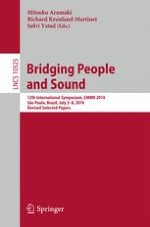
2017 | OriginalPaper | Buchkapitel
deepGTTM-I&II: Local Boundary and Metrical Structure Analyzer Based on Deep Learning Technique
verfasst von : Masatoshi Hamanaka, Keiji Hirata, Satoshi Tojo
Erschienen in: Bridging People and Sound
Aktivieren Sie unsere intelligente Suche, um passende Fachinhalte oder Patente zu finden.
Wählen Sie Textabschnitte aus um mit Künstlicher Intelligenz passenden Patente zu finden. powered by
Markieren Sie Textabschnitte, um KI-gestützt weitere passende Inhalte zu finden. powered by